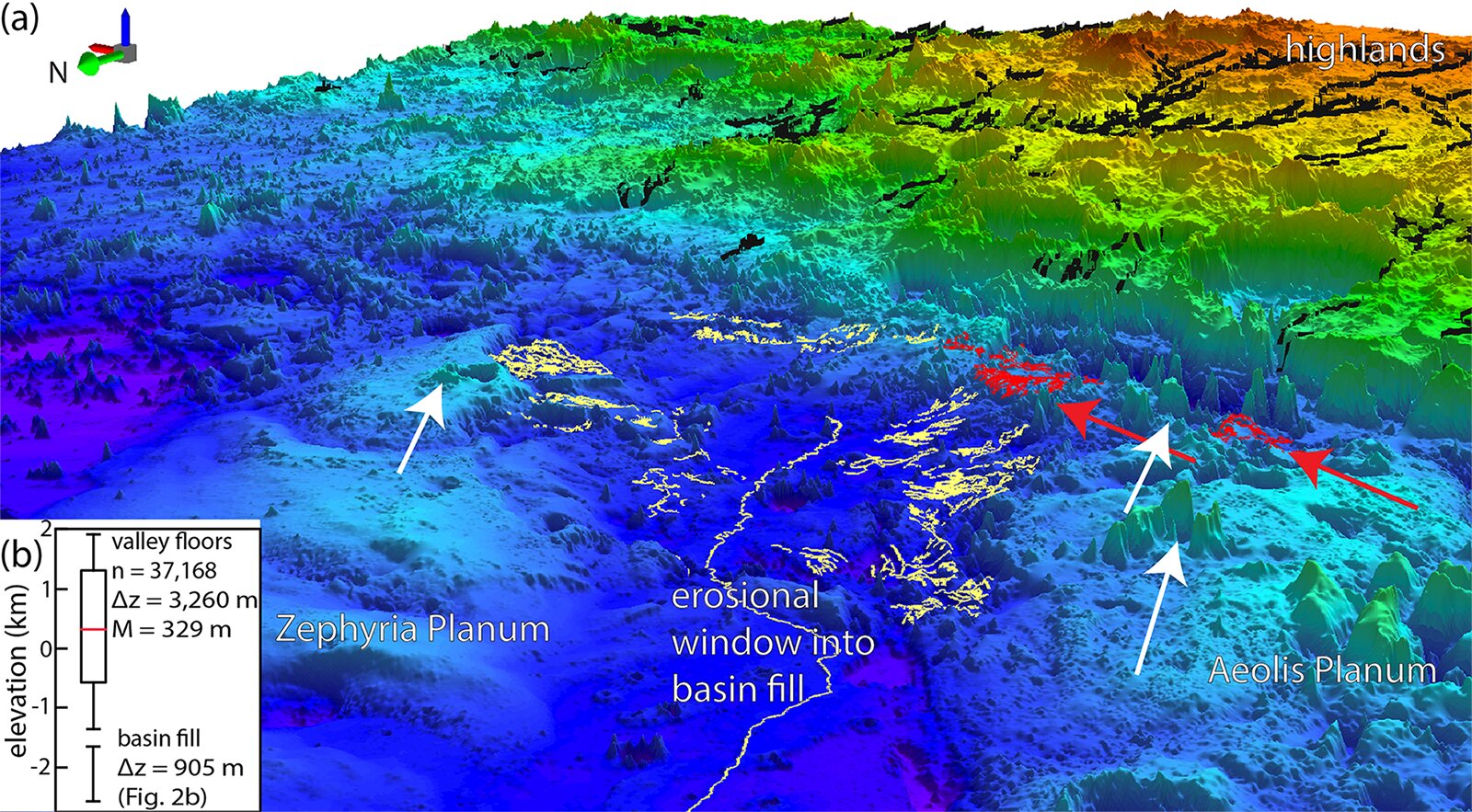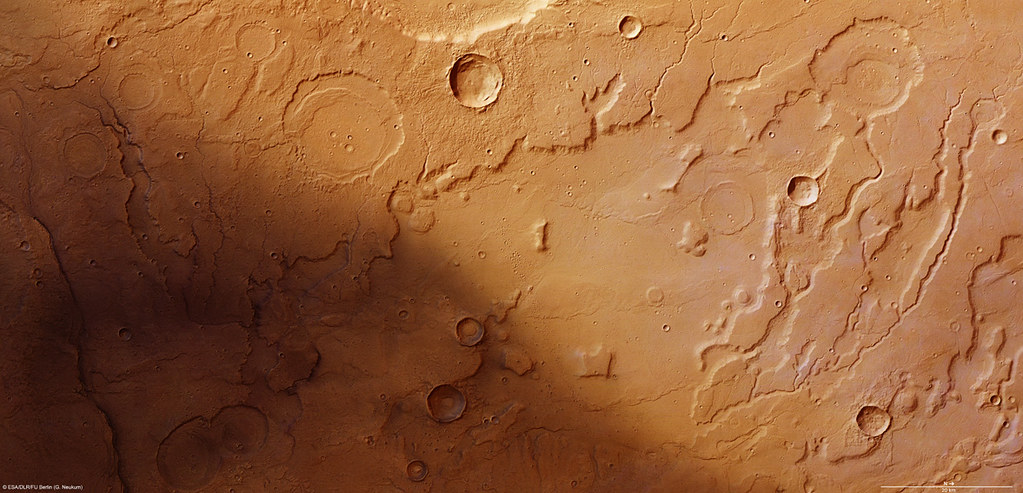Scientists found clear evidence in topography maps of a 3.5-billion-year-old shoreline about 900 metres thick that covered thousands of square kilometres.
The scientific community has long been debating whether Mars had an ocean in its northern hemisphere.
The maps of the planet’s north provide the strongest found evidence that the red planet used to experience sea level rises consistent with a warm and wet climate, different from the harsh frozen landscape it is today.
“What immediately comes to mind as one the most significant points here is that the existence of an ocean of this size means a higher potential for life,” said Benjamin Cardenas, assistant professor of geosciences at Pennsylvania State University and lead author on the study in the Journal of Geophysical Research: Planets.
“It also tells us about the ancient climate and its evolution. Based on these findings, we know there had to have been a period when it was warm enough and the atmosphere was thick enough to support this much liquid water at one time.”
The scientists used software developed by the United States Geological Survey to map data from Nasa’s Mars Orbiter Laser Altimetre.

“We call that stratigraphy, the idea that water transports sediment and you can measure the changes on Earth by understanding the way that sediment piles up. That’s what we’ve done here — but it’s Mars.”
6,500 kilometres of river ridges was discovered which were grouped into 20 systems, showing the ridges likely eroded river deltas or submarine-channel belts, what remains of an ancient Martian shoreline.
The area that used to be ocean is known now as Aeolis Dorsa and has the densest collection of river ridges on Mars. To find a record of life on Mars, Aeolis Dorsa is the most logical space to look.
“A major goal for the Mars Curiosity rover missions is to look for signs of life,” Cardenas said.
“It’s always been looking for water, for traces of habitable life. This is the biggest one yet.
“It’s a giant body of water, fed by sediments coming from the highlands, presumably carrying nutrients.
“If there were tides on ancient Mars, they would have been here, gently bringing in and out water. This is exactly the type of place where ancient Martian life could have evolved.”






